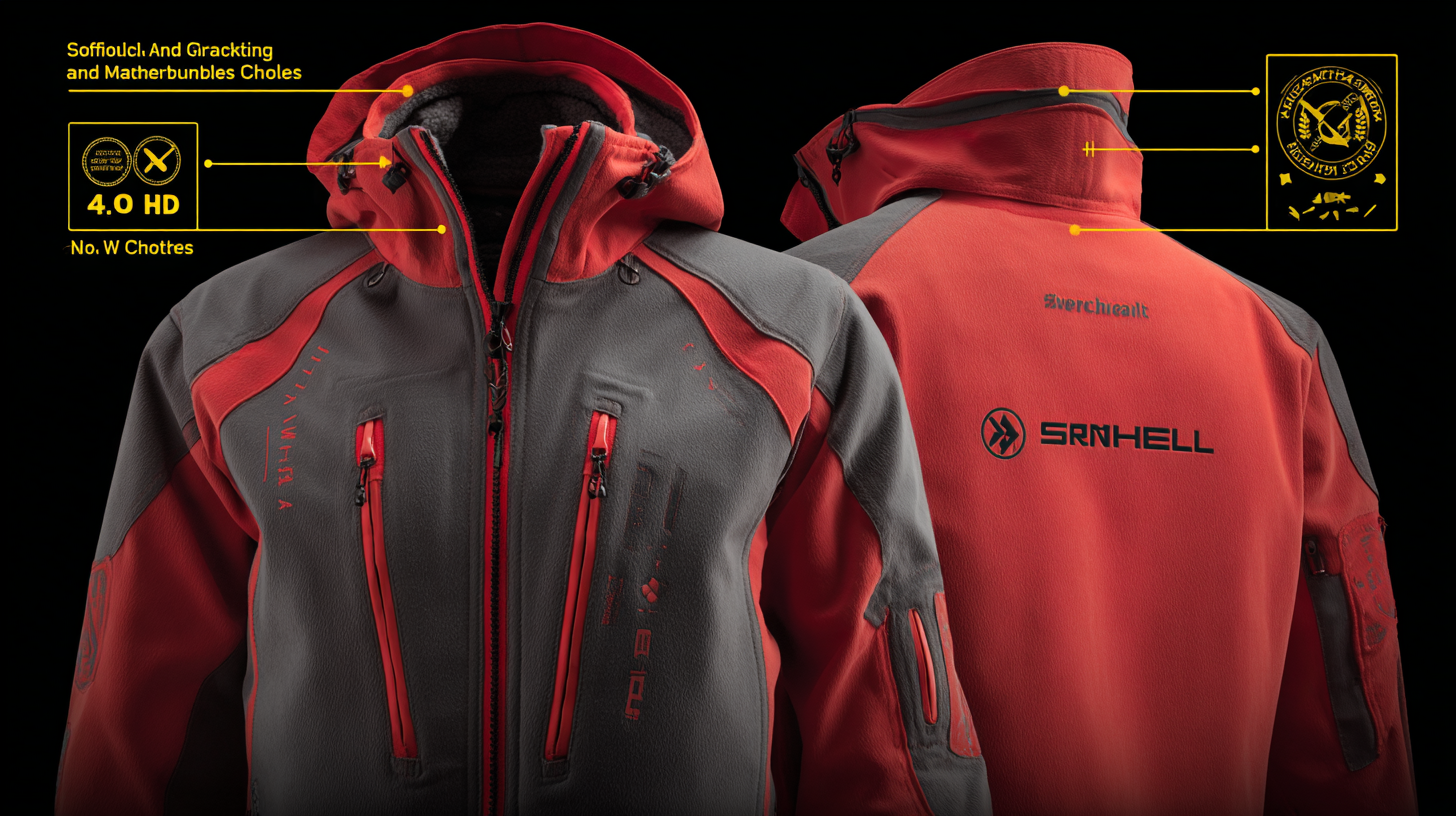
Understanding Global Manufacturing Standards for Best Softshell Clothes and How to Choose Wisely
In the evolving landscape of outdoor apparel, softshell clothes have gained immense popularity due to their versatility and performance. According to a report by Research and Markets, the global market for softshell garments is projected to reach $6.5 billion by 2026, reflecting a growing consumer demand for high-quality, functional clothing that can withstand varying weather conditions. However, navigating the myriad of global manufacturing standards presents challenges for both manufacturers and consumers alike. As the industry grapples with issues related to sustainability, quality control, and regulatory compliance, understanding these standards becomes essential for making informed purchasing decisions. This blog will delve into the common problems associated with manufacturing standards in the softshell clothing sector and provide insights on how to choose wisely amidst the complexities of global production.

Key Global Manufacturing Standards Impacting Softshell Clothing Quality
 When it comes to softshell clothing, understanding global manufacturing standards is crucial to ensure quality, durability, and performance. Key standards such as ISO 14001 for environmental management and Oeko-Tex Standard 100 for textile safety heavily influence the quality of softshell garments. These standards provide benchmarks for manufacturers, emphasizing sustainability practices and consumer safety. For instance, according to the Sustainable Apparel Coalition, brands complying with these standards often report a 20% reduction in environmental impact, which ultimately enhances the reputation of their products in the global market.
When it comes to softshell clothing, understanding global manufacturing standards is crucial to ensure quality, durability, and performance. Key standards such as ISO 14001 for environmental management and Oeko-Tex Standard 100 for textile safety heavily influence the quality of softshell garments. These standards provide benchmarks for manufacturers, emphasizing sustainability practices and consumer safety. For instance, according to the Sustainable Apparel Coalition, brands complying with these standards often report a 20% reduction in environmental impact, which ultimately enhances the reputation of their products in the global market.
When selecting softshell clothing, consumers should consider materials that meet international standards. Look for items labeled with "bluesign®", which signifies responsible production processes minimizing resource consumption. Additionally, garments tested for breathability and water resistance according to international protocols guarantee enhanced performance in various weather conditions.
Tips: Always check for third-party certifications on the labels to ensure the product meets recognized standards. Pay attention to the garment's maintenance instructions as well; proper care can significantly extend the lifespan of softshell clothing. Lastly, don’t hesitate to inquire about the manufacturing processes used, as transparency often correlates with higher quality.
Comparative Analysis of Softshell Fabric Types and Their Properties
When selecting softshell clothing, understanding the different fabric types and their properties is crucial for achieving optimal performance and comfort. Softshell fabrics typically fall into three main categories: woven, knitted, and laminated. Woven fabrics are known for their durability and wind resistance, making them suitable for outer layers in rugged conditions. Knitted options offer greater flexibility and breathability, while laminated fabrics provide superior waterproofing, essential for wet environments.
Recent advancements in non-destructive testing methods for evaluating the thermo-physiological comfort of fabrics give consumers and manufacturers valuable insights into performance criteria. For instance, technologies like computer-evaluated skin models have become instrumental in assessing how fabrics interact with body heat and moisture. Such evaluations emphasize that breathability can significantly affect comfort levels—data shows that fabrics with higher moisture vapor transmission rates can enhance overall wearability, particularly during high-intensity activities. Therefore, making informed decisions based on these properties can lead to enhanced comfort and performance when choosing softshell garments for various outdoor pursuits.
Essential Features to Look for in High-Quality Softshell Jackets
When selecting high-quality softshell jackets, it’s crucial to consider several essential features that contribute to both performance and comfort. First and foremost, look for materials that offer a solid balance between breatheability and water resistance. Fabrics like polyester blends often provide excellent moisture management while blocking wind, making them ideal for outdoor activities. Additionally, a durable water repellent (DWR) finish can significantly enhance the jacket's ability to shed light rain, ensuring you stay dry without sweating excessively underneath.
Another key feature to evaluate is the jacket’s fit and design. A well-fitted softshell should allow for a full range of motion, whether you are climbing, hiking, or simply enjoying a weekend stroll. Pay attention to features like adjustable cuffs, hems, and hoods, which can enhance the overall fit and comfort by keeping out the elements. Finally, consider pockets and storage options; strategically placed zippered pockets can provide secure storage for essentials while maintaining easy access, making your outdoor experience more convenient and enjoyable.
Navigating Certifications: What to Check for in Manufacturing Processes
When choosing softshell clothes, understanding manufacturing certifications is crucial for ensuring quality and sustainability. While certifications may vary, they often encompass key standards that reflect a commitment to ethical production and environmental responsibility. Brands that adhere to recognized certifications, such as Global Organic Textile Standard (GOTS) or OEKO-TEX, typically undergo rigorous assessments that cover individual manufacturing processes, from material sourcing to labor practices.
Moreover, as the fashion industry increasingly turns towards renewable energy, the impact of these practices cannot be overstated. A recent report highlighted that major players in the sector are making varying degrees of renewable electricity commitments, with some aiming for 100% renewable energy in their operations. This trend towards sustainability not only enhances brand reputation but can also significantly reduce operational costs in the long run. It's essential for consumers to look for brands that transparently share their manufacturing processes and energy strategies, enabling informed decisions that align with personal values regarding environmental impact and ethical consumption.
Expert Tips for Making Informed Choices When Buying Softshell Apparel
When it comes to choosing the right softshell apparel, being informed about global manufacturing standards is crucial. Softshell garments are designed to provide a balance between breathability, water resistance, and warmth, making them a popular choice for outdoor activities. Understanding the materials and construction methods used in softshell clothing can significantly impact your buying decision. Look for certifications such as GORE-TEX or similar quality standards that indicate a product's durability and performance. These standards ensure that the apparel meets specific criteria for water protection and breathability, giving you confidence in your investment.
Additionally, consider the intended use of the softshell clothing before making a purchase. Whether you plan on engaging in hiking, skiing, or casual outdoor activities, the features of the garment should align with your needs. Pay attention to attributes such as pocket placement, ventilation zippers, and adjustable cuffs, which enhance comfort and functionality. Checking customer reviews can also provide insight into real-world performance and user satisfaction, helping you to make a more informed choice. By focusing on these expert tips, you can select softshell apparel that not only meets high manufacturing standards but also suits your lifestyle perfectly.

